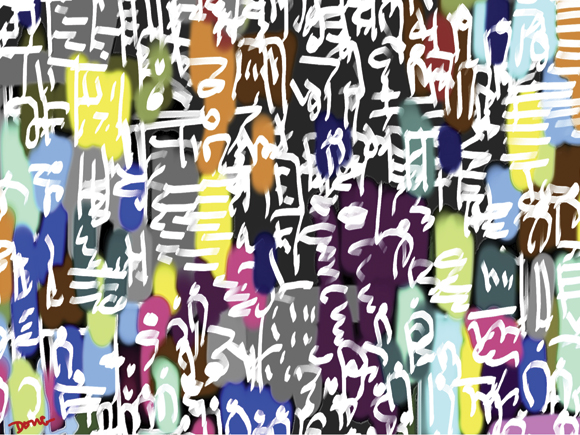- HOME
- INTRO TO THE FORUM
- USE AND MISUSE
- BADLY WRITTEN, BADLY SPOKEN
- GETTING
TO KNOW ENGLISH - PREPARING FOR ENGLISH PROFICIENCY TESTS
- GOING DEEPER INTO ENGLISH
- YOU ASKED ME THIS QUESTION
- ADVOCACIES
- EDUCATION AND TEACHING FORUM
- ADVICE AND DISSENT
- MY MEDIA ENGLISH WATCH
- STUDENTS' SOUNDING BOARD
- LANGUAGE HUMOR AT ITS FINEST
- THE LOUNGE
- NOTABLE WORKS BY OUR VERY OWN
- ESSAYS BY JOSE CARILLO
- Long Noun Forms Make Sentences Exasperatingly Difficult To Grasp
- Good Conversationalists Phrase Their Tag Questions With Finesse
- The Pronoun “None” Can Mean Either “Not One” Or “Not Any”
- A Rather Curious State Of Affairs In The Grammar Of “Do”-Questions
- Why I Consistently Use The Serial Comma
- Misuse Of “Lie” And “Lay” Punctures Many Writers’ Command Of English
- ABOUT JOSE CARILLO
- READINGS ABOUT LANGUAGE
- TIME OUT FROM ENGLISH GRAMMAR
- NEWS AND COMMENTARY
- BOOKSHOP
- ARCHIVES
Click here to recommend us!
READINGS IN LANGUAGE
This section features links to interesting, instructive, or thought-provoking readings about the English language and related disciplines. The selections could be anywhere from light and humorous to serious and scholarly, and they range widely from the reading, writing, listening, and speaking disciplines to the teaching and learning of English.
The roots of Indo-European family of languages traced to Anatolia
Taking the existing vocabulary and geographical range of 103 Indo-European languages and computationally walking them back in time and place, a research team led by New Zealand evolutionary biologist Quentin Atkinson has found “decisive support” for the origin of the Indo-European family of languages in ancient Anatolia (now Turkey) about 9,000 years ago.
This finding was announced by the Atkinson’s team in the August 23 issue of the journal Science. They reported that both the timing and the root of the tree of Indo-European languages “fit with an agricultural expansion from Anatolia beginning 8,000 to 9,500 years ago.” In contrast, the prevailing theory is that the first speakers of proto-Indo-European mother tongue were chariot-driving pastoralists who conquered Europe and Asia after bursting out of their homeland on the steppes above the Black Sea about 4,000 years ago.
As reported by Nicolas Wade in the August 23, 2012 issue of The New York Times, the work of Dr. Atkinson’s team integrated a large amount of information with a computational method that has proved successful in evolutionary studies. They started with a menu of vocabulary items known to be resistant to linguistic change, like pronouns, parts of the body and family relations, and compared them with the inferred ancestral word in proto-Indo-European. They then scored each set of words on the vocabulary menu for the 103 languages to come up with a computational model of the most likely family tree showing the relationships among those languages.
RELATED READINGS:

FROM PROSPECT MAGAZINE
Not simply prescribed by our genes. In “Why are languages so different—and disorderly?”, an article that came out in the August 22, 2012 issue of the Prospect Magazine in the UK, Philip Ball reports that based on recent scientific studies, language “universals” aren’t simply prescribed by genes but arise from the interaction between the biology of human perception and the bustle, exchange and negotiation of human culture. He explains: “Through face-to-face encounters, language evolves to reconcile our conflicting needs as speakers or listeners: when speaking, we want to say our bit with minimal effort—we want language to be structurally simple. As listeners, we want the meaning to be clear—we want language to be informative. In other words, speakers try to shift the effort onto listeners, and vice versa.”
Endangered Pinoy languages. In “Yes, some Pinoy languages are on the brink of extinction,” a recent news story reported by the Yahoo! Southeast Asia Newsroom, at least 15 Philippine languages are not only becoming less known but are also being forced to extinction by more widely used regional languages. Among the endangered languages are the Isarog Agta and the Lake Buhi Agta of the province of Camarines Sur and the Sorsogon Agta of Sorsogon. The information was culled from the University of Hawaii’s Catalog of Endangered Languages and from Eastern Michigan University’s Institute for Language Information and Technology.
Read the full story of “Yes, some Pinoy languages are on the brink of extinction” on Yahoo now!
Click to read comments or post a comment
View the complete list of postings in this section
(requires registration to post)






